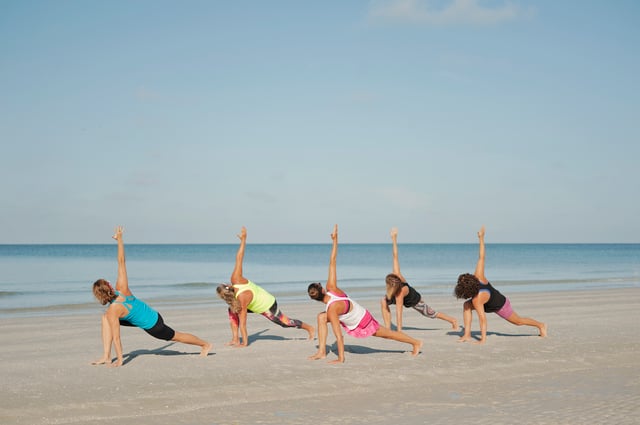9 Things You Should Know Before You Decide to Lead a Yoga Retreat
So you’re a practicing yogi, and you’ve been instructing for awhile. Is it time to lead your first yoga retreat?
Planning your dream retreat is an exciting prospect. You can work on growing your yoga business by running a retreat that encapsulates all you have to offer. But there are a few things to realize about being a retreat leader first!
What Are The Key Elements of Planning Successful Retreats?
Timeline planning • Selecting your venue • Itinerary & program design • Sustainability considerations • Marketing • Financials & profitability • Legal forms & liabilities • Insurance
1. It’s not just about teaching yoga
While the focus of your retreat might be yoga, what are you going to be doing for the many other hours in the day? People go on a retreat to experience the benefits of yoga, but also for a vacation. And you’re their guide. As a retreat leader, you’re the point of contact for the whole trip, and you’ll find yourself in the position of tour guide. Make sure you know your stuff!

2. Leading a retreat is not a vacation
Leading a successful retreat involves a lot of organization, dedication, and hard work. It’s not all laying by the pool or on the beach in between running yoga classes! You’ll need to be available throughout the retreat for extra classes, optional activities, time to chat with the students or sort out any issues.

3. It’s a lot of work
Running a successful yoga retreat isn’t just in finding a great location (although that it is important) but it’s also in how you price your retreat, advertise and market it, and how you manage the retreat while it’s happening. Be sure to engage your best organizational skills, or find ways to make things easier on yourself.

4. Your students have expectations
Students on retreat aren’t just coming to a class or two a week and then returning to their normal lives. They want a deeper and more meaningful yoga experience, as well as a vacation. Students are practicing yoga on retreat more than they normally might, or more with the same instructor. If you’re leading the retreat alone then you need to manage the classes so that students can grow and develop over the retreat and it's not too repetitive.
Aside from that, you’ll need to have enough optional activities or workshops (but not too many) to keep them entertained and feel like coming on the retreat was worth it, rather than just going on a vacation on their own.

5. You don’t have to do it alone
If you’re a first-time retreat leader then it’s well worth considering having a retreat partner, or at least an administration assistant. Also, take advantage of systems to help you with your retreat planning an organization. WeTravel have a free trip creator and a payment system to make retreat planning more efficient and cost-effective.

6. You have to spend money to make money
Putting a deposit on a retreat location, creating marketing materials and managing payments are all going to cost you money, but ideally, you’ll make this back if you run a successful retreat. To do that, you need to price your retreat right and have effective marketing.

7. Problems will arise
Don’t expect your first retreat (or any retreat!) to pass by without a problem. If it does then that’s an amazing achievement and quite a bit of luck, but for most, there will be one thing or another. Just remember, it’s all in how you deal with the issues, especially when it comes to your attendees. Have some plan B options, engage the support of the retreat center, or have a trusted mentor to help you out if you need to.

8. It’s not all about the yoga
A yoga retreat isn’t just about the yoga, no matter how amazing you are as an instructor. The food you have on retreat, the optional activities you offer, the location, price, and the whole overall experience will all make a difference. Don’t forget about the vacation side of things, and try to offer your students unique local and cultural experiences.

9. You don’t have to plan every minute
Downtime on a retreat is essential for students to be able to properly relax and unwind, so don’t overcommit them to too many activities. You may not have as much free time since you need to be available to your students, but make sure you’re not overreaching yourself in a way that affects your instruction or overall enjoyment of the retreat. Your students will notice! They should come away feeling relaxed and rested, and a part of their own little retreat community. Allow time for that to happen.

Leading a yoga retreat can be a hugely rewarding experience if you don’t go into it with blinders on! Use our Retreat Leader Resources to help you, and check out the WeTravel trip planning system to help you lead the best retreat possible.
New resources, straight to your inbox
We’re committed to your privacy. WeTravel uses the information you provide to us to contact you about our relevant content, products, and services. You may unsubscribe at any time.





